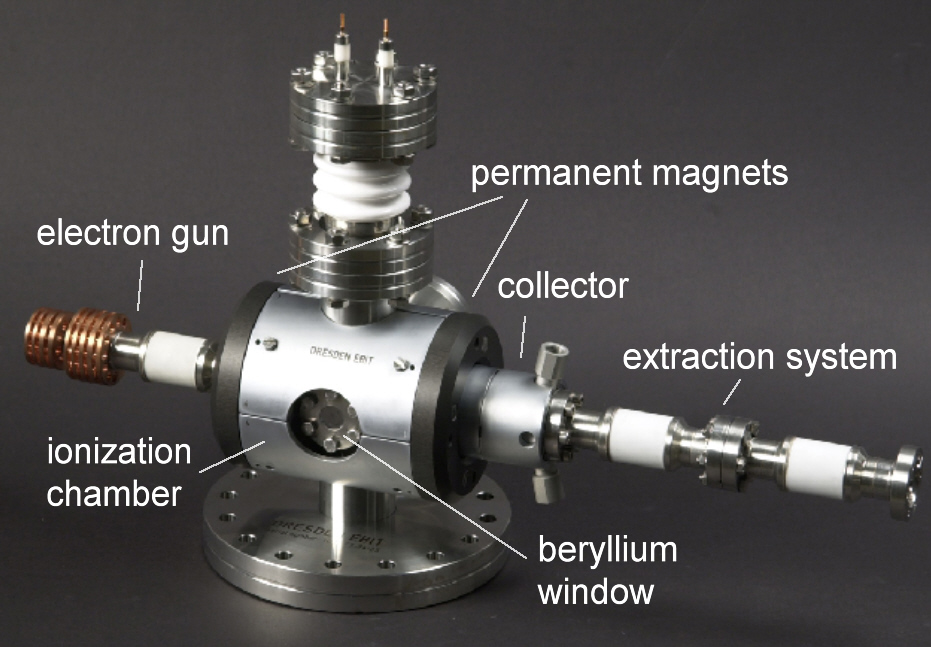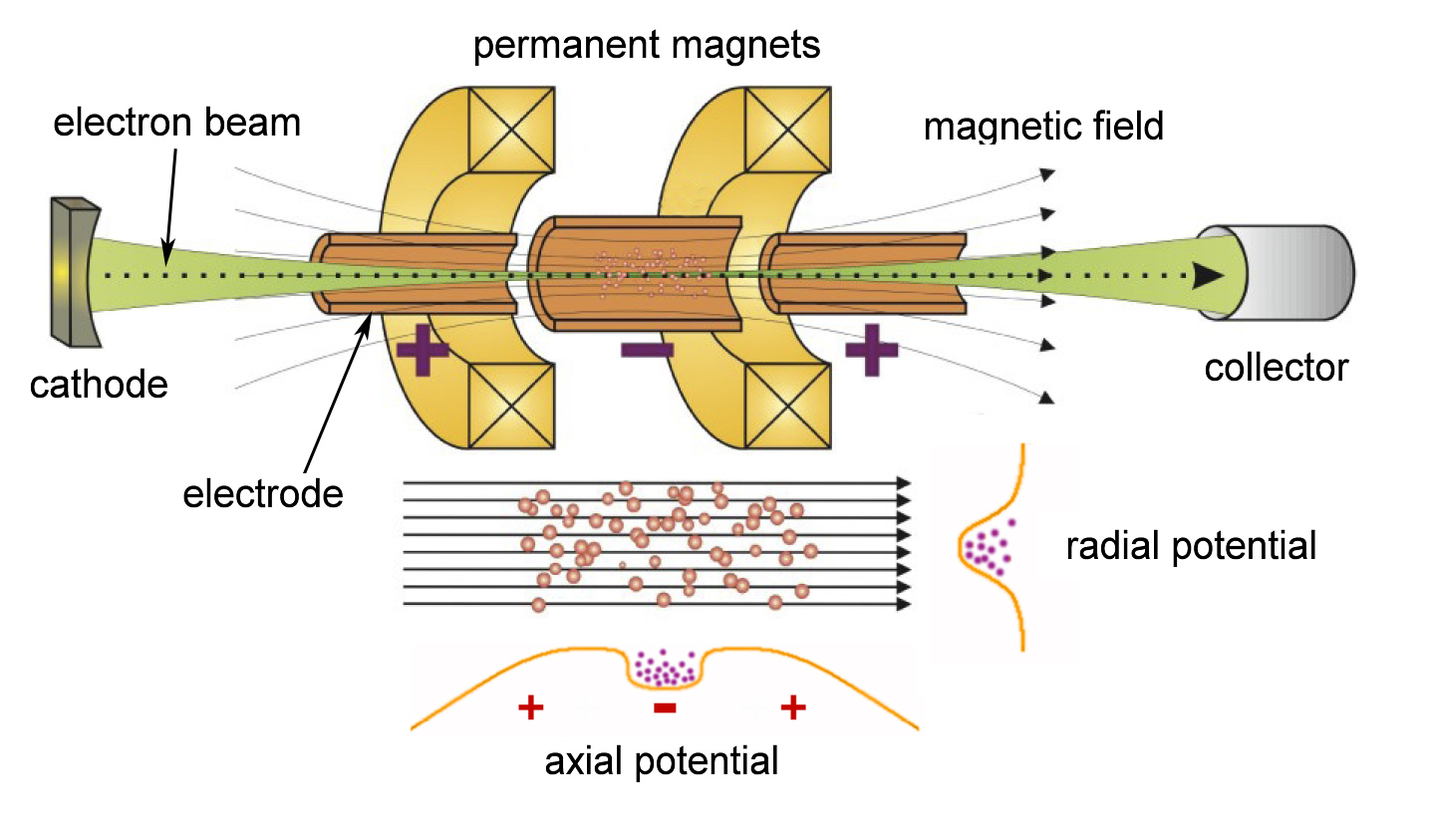The SPARC EBIT
The SPARC-EBIT (Electron Beam Ion Trap) is a room-temperature ion source build by the DREEBIT Company for the production of highly charged ions in the middle Z region (see fig. 1). It is used as a test- and offline-source by the SPARC collaboration for the HITRAP-beamline, where experiments with highly charged ions at low kinetic energies will be performed. But also studies in the field of laser and plasma physics as well as surface and charge-exchange experiments are planned.

Fig. 1: The SPARC-EBIT (photo: Dreebit Company)
The functional principle of an EBIT is based on ionization by electron collisions. Fig. 2 shows schematic design the SPARC-EBIT with the electron gun for free electron production, the ionization chamber and the magnetic system. Electrons, emitted from a heated cathode, are compressed by the 250 mT strong magnetic field of two permanent magnets to an intense beam, which interacts in the 2 cm long ionization chamber with neutral atoms or low charged ions. Trapped by the potential configuration of the drift tubes in longitudinal direction and axial by the space charge of the electron beam, the atoms are successive ionized to highest charge states. The electron energy is defined by the potential difference between the cathode potential and the potential of the middle drift tube. For the SPARC-EBIT (see Fig. 2) the maximum electron energy is given with about 15 keV, the electron beam current with 50 mA.

Fig. 2: Schematic design of the SPARC-EBIT
At the collector the electrons are deflected. By lowering the potential at the electrode on the collector side, the produced ions can be extracted in different modes for external experiments. The emittance of the ion beam is about 10 mm mrad, the pulse length ranges from about 1 microsecond up to several tens of microseconds. Furthermore a beryllium-window (thickness 1 mil) allows the examination of the x-rays, produced by recombination processes in the ionization region.
